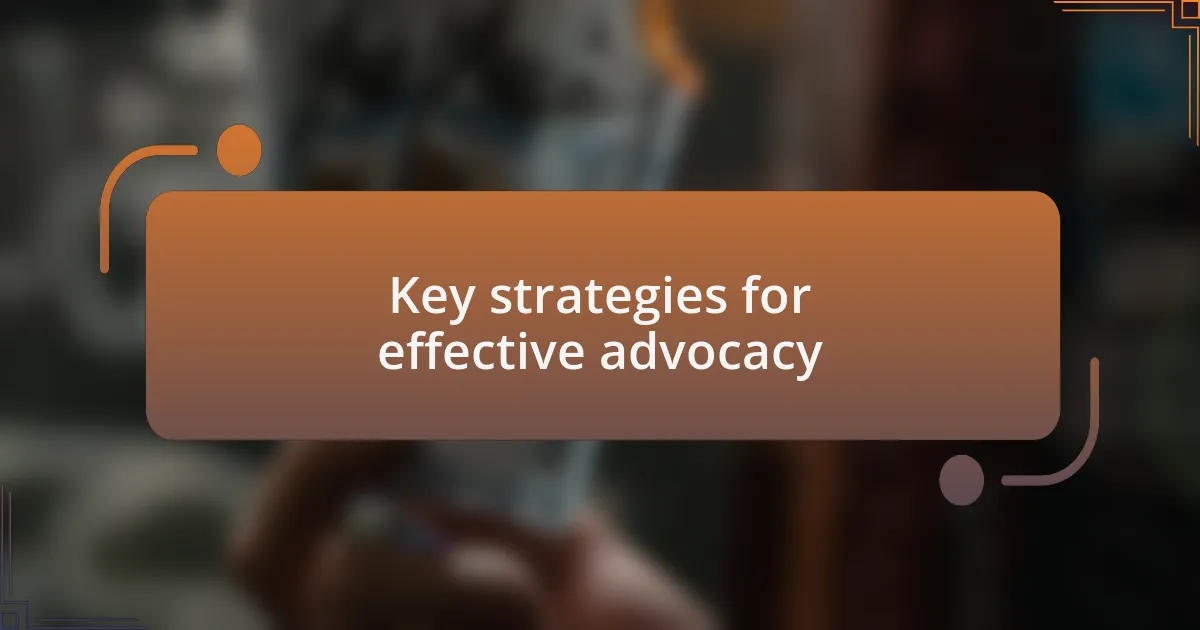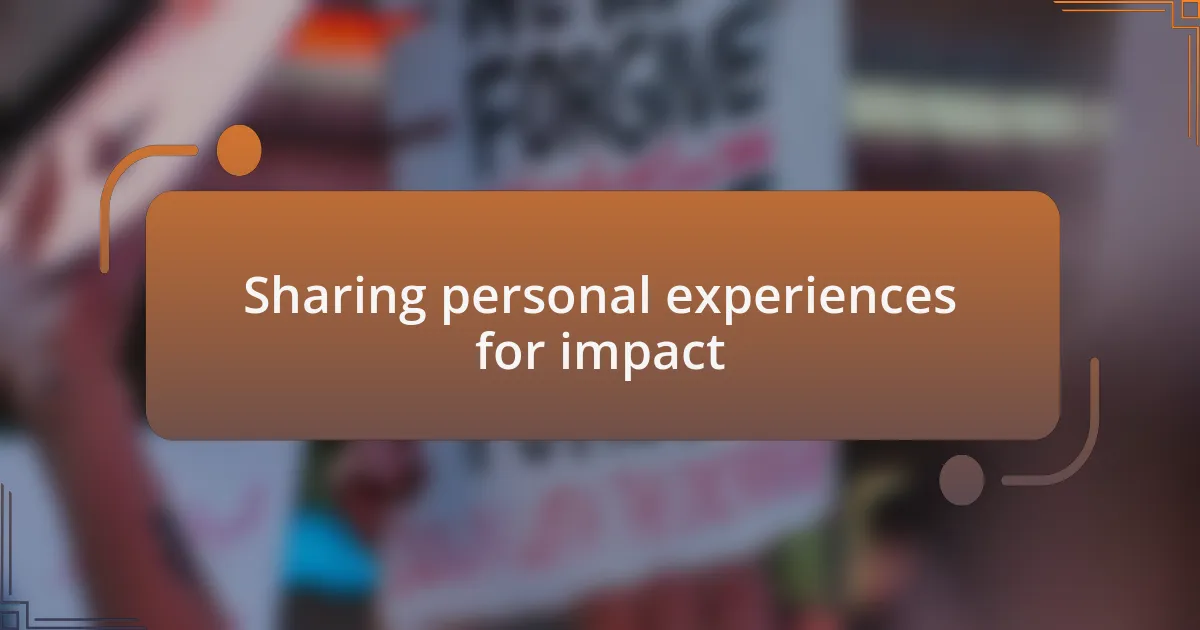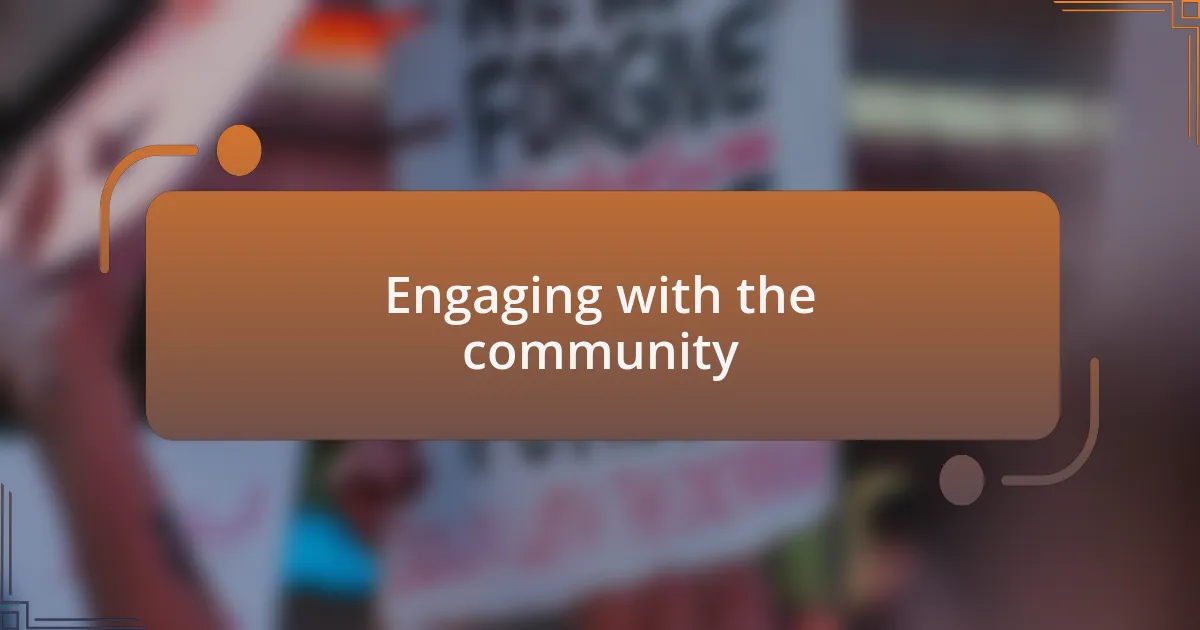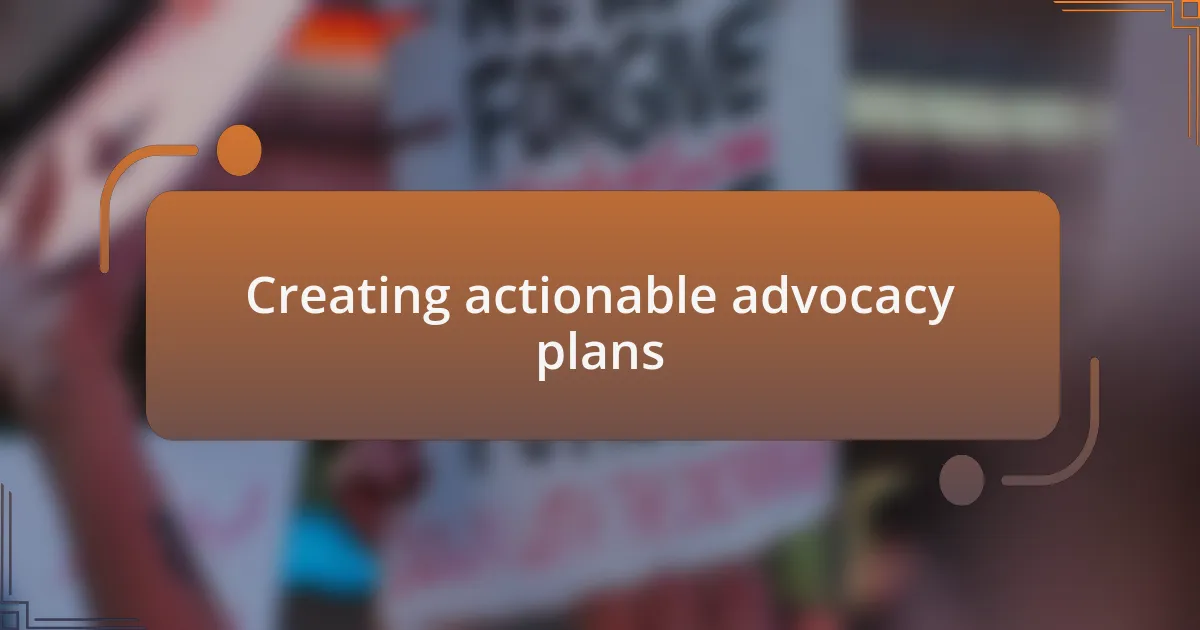Key takeaways:
- Pro-life advocacy emphasizes the intrinsic value of life and the importance of compassion and support for individuals facing difficult choices.
- Self-advocacy empowers individuals and encourages sharing personal stories to create understanding and community among diverse perspectives.
- Effective advocacy strategies include emphasizing personal narratives, building partnerships, and utilizing social media to enhance outreach and engagement.
- Creating actionable advocacy plans involves setting clear goals, being adaptable to change, and fostering collective growth through community collaboration.

Understanding pro-life advocacy
Pro-life advocacy is rooted in the belief that every human life has intrinsic value, from conception to natural death. I remember attending a local pro-life rally where I was surrounded by passionate individuals, each sharing their stories. It struck me how these personal experiences fueled their commitment, making the abstract notion of life feel profoundly personal and deeply real.
In my journey to understand pro-life advocacy, I’ve often grappled with the emotional weight of the discussions surrounding it. It’s not just an issue of policy; it’s a matter of compassion and respect for all lives involved. Have you ever considered how many voices go unheard in debates about life? It’s crucial to embrace those narratives while advocating for policies that prioritize the unborn.
As I delve deeper into this movement, I realize the importance of open dialogue and respectful discourse. Advocating for life isn’t merely about opposing abortion; it’s also about providing support and resources for women facing difficult choices. This dual focus is something I’ve seen firsthand in community outreach programs, where compassion meets advocacy in powerful ways.

Importance of self-advocacy
Self-advocacy is essential not only for individuals but also for communities, particularly in the pro-life movement. I recall a time when I felt hesitant to share my thoughts during a discussion on life-affirming policies. The moment I spoke up, I realized the power of my voice—how it resonated with others and encouraged them to share their own perspectives. Have you ever wondered how far a single voice can go in shaping others’ understanding?
Understanding the importance of self-advocacy has taught me that everyone’s story deserves to be heard, especially in controversial discussions. I often reflect on a particularly impactful conversation I had with a friend who had faced an unplanned pregnancy. Sharing her journey illuminated the critical need for compassion and support in our advocacy efforts. This personal experience reminded me that self-advocacy isn’t just about promoting beliefs—it’s about creating a safe space where every story can contribute to a larger narrative.
Moreover, self-advocacy is a means of empowerment. When I took the initiative to participate in workshops that trained individuals on how to advocate for themselves, I found a deeper sense of confidence in speaking about my beliefs. It reinforced the idea that effective advocacy begins with understanding one’s own value and standing firm in that truth. In what ways do you feel empowered to advocate for life? It turns out that when we advocate for ourselves, we inherently uplift others too.

Key strategies for effective advocacy
Emphasizing personal stories is a powerful strategy in effective advocacy. I remember attending a local pro-life rally where individuals shared their experiences with unplanned pregnancies. As they opened up about their fears and triumphs, I felt an emotional connection that transformed the discussion. Have you ever experienced that moment when personal narratives shift opinions? It’s a reminder that sharing our vulnerabilities can foster understanding and create bridges between differing perspectives.
Another key strategy involves building partnerships with like-minded organizations. I once collaborated with a local crisis pregnancy center, which allowed us to amplify our voices together. This partnership not only increased our reach but also enriched our understanding of the challenges faced by individuals in crisis. How often do you consider the power of coalition-building in advocacy? When we unite around common goals, we create a stronger front that makes our message more compelling.
Lastly, utilizing social media can dramatically enhance your advocacy efforts. I vividly recall a campaign I launched on social networks to raise awareness about the importance of adopting life-affirming policies. The immediate feedback was overwhelming; friends and acquaintances engaged in impactful discussions and even shared their own stories. Have you thought about how your online presence could ignite conversations about pro-life issues? Leveraging digital platforms allows us to reach broader audiences and facilitates dialogue that might not happen otherwise.

Building confidence in your voice
Building confidence in your voice takes practice, but it often starts with acknowledging your own worth. I remember when I first shared my thoughts during a community meeting about pro-life issues. My heart raced, and I could feel the weight of everyone’s gaze. But as I spoke about a friend’s experience with a crisis pregnancy, I gained a sense of purpose that fueled my confidence. Have you ever noticed how sharing even a small piece of yourself can make you feel more empowered?
Creating a supportive environment is also crucial. In my experience, surrounding myself with encouraging advocates transformed how I approached discussions. After attending workshops and support groups, I learned to express my opinions without second-guessing myself. Those spaces pushed me to embrace my voice—not just for myself, but for others who might feel silenced. How often do we find strength in community when we believe in the collective message we share?
Moreover, practice can be a game-changer. I often rehearsed my points aloud before speaking at events. It felt awkward at first, but over time, I learned how to articulate my thoughts clearly. Occasionally, I would even invite a friend to listen and provide feedback. What better way to refine your message than by getting real-time advice? Each practice session boosted my confidence and helped me discover the authenticity in my voice.

Sharing personal experiences for impact
Sharing personal experiences can create powerful connections that resonate deeply with others. I recall attending a pro-life rally where speakers shared their journeys of overcoming difficult situations. One story stirred me particularly; a woman described her unexpected pregnancy at an inopportune time. Her vulnerability drew the crowd in, not just compelling us to listen, but urging us to reflect on our own life experiences. Have you ever felt that rush when someone’s story mirrors your own struggles?
Another moment that stands out was when I wrote a blog post about my early misconceptions about pro-life advocacy. I shared how those misunderstandings nearly led me to silence my voice. When I saw the comments from readers who felt similarly, it reinforced my belief in the importance of sharing authentically. Isn’t it amazing how opening up about our challenges can cultivate a community of empathy and understanding?
The impact of storytelling also extends beyond mere connection; it can inspire action. When I narrated my experience at a local community board meeting, I noticed several attendees nodding along, some even reaching for their phones to take notes. This taught me that our stories can not only validate our feelings but also motivate others to join the cause. Have you ever considered how your own story might ignite a spark in someone else?

Engaging with the community
Engaging with the community is all about building relationships and understanding shared values. I remember volunteering at a local crisis pregnancy center where I interacted with people from different backgrounds. Each person came with their own perceptions and stories, and it was enlightening to see how a simple conversation could shift a viewpoint. Have you ever experienced that moment when a dialogue opens your eyes to perspectives you had never considered?
One day, after facilitating a small workshop on the importance of pro-life advocacy, a participant approached me. She shared how she had felt isolated in her beliefs until that moment. Hearing her express gratitude for the space we created reminded me of the power we have to foster a sense of belonging. Have you thought about how your presence could lead someone else to feel less alone in their journey?
Community engagement also leads to collective growth, both personally and publicly. There was a local event where people came together to share resources and support. I felt an overwhelming sense of camaraderie as we brainstormed ways to help young mothers in need. It made me realize that our combined efforts hold more strength than any single voice. Isn’t it incredible how collaboration can transform our world, one small step at a time?

Creating actionable advocacy plans
Creating actionable advocacy plans requires a clear understanding of your goals and the audience you want to reach. I recall drafting my first advocacy plan and feeling overwhelmed by the scope of the task. However, breaking it down into smaller, achievable steps made it manageable and gave me a sense of purpose. Have you ever felt that thrill when you decide on a clear path forward?
In one instance, I outlined specific actions such as organizing community meetings and launching a social media campaign. By setting timelines and assigning roles, our group became more cohesive. This approach transformed our vision into tangible results, making it evident how planning can amplify our impact. Isn’t it fascinating how a structured plan can turn ideas into reality?
As I adjusted and refined my plan based on feedback, I learned the importance of adaptability. At a local demonstration, our original strategy needed tweaking due to unforeseen circumstances. I realized that staying flexible and open to new ideas can enhance our advocacy efforts significantly. How might your response to challenges shape the success of your advocacy work?